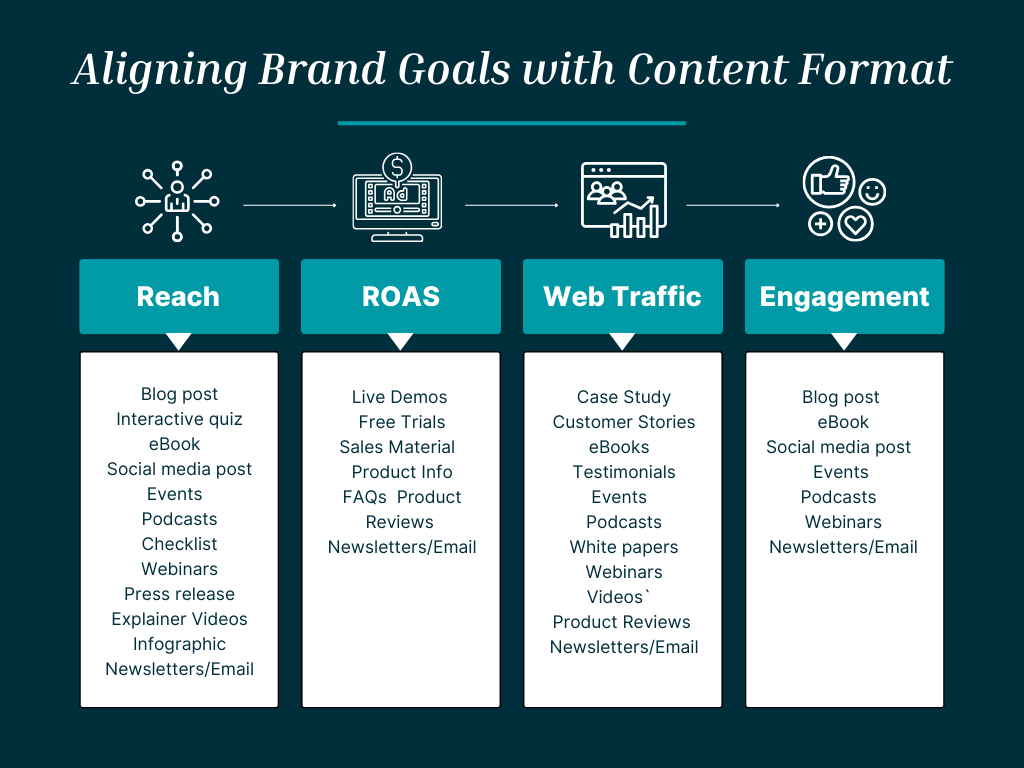Now more than ever, consumers desire a more meaningful connection with the brands they follow. Your audiences crave behind the scenes videos covering meaningful origin and philanthropic stories, the colorful, entertaining brand voice on social media, and highly personalized written content that feels truly authentic. There is no better way to do that than investing in a content marketing strategy. From everyday people to celebrities to brands both large and small, everyone is realizing the power that content has over driving action along the customer journey. If your brand is not investing in thoughtful content today, read on to learn more about why every brand should be incorporating this into their marketing strategies.
Why Content Marketing?
Whether you yourself are the brand or your business is the brand, content marketing is important to invest in – especially in the digital era where content is constantly consumed across multiple platforms for both personal and professional reasons.
Here are some of the key reasons to believe in content marketing:
It’s lucrative
Content marketing can boost conversions leading to higher sales or traffic to your website, all the while signaling to google that the domain has high authority and increasing your rank in search engines. More content + more exposure = higher ROI. Invest in high quality content and your audience will invest in you.
It’s a relationship builder
While content marketing may ultimately lead to higher sales, it shouldn’t be about selling, but rather helping. By taking this approach, content marketing can help you increase loyalty thus building trust and creating a sense of community surrounding your brand. Make sure you are tailoring your content to your audience’s biggest questions and what they value.
Your competitors are using it
97% of businesses use content marketing, and that includes 73% of marketers.. Don’t fall behind and let your competitors get the upper hand. Use multiple different types of content to be seen as a thought leader among similar brands and meet business goals at each stage of the customer journey.
Choosing Your Content
The process of choosing which content types to lean towards looks a little different for every brand. There are a vast number of content types like social media posts, infographics, blogs, podcasts, videos, and paid content marketing with reputable publishers. It’s important to start by assessing what makes the most sense for your brand.
Take a look at the infographic below to begin aligning your content marketing goals with your overarching brand goals.

Defining Your audience
Your audience should play a large role in determining your content. Start by narrowing down your audience’s potential topics of interest and looking at which platforms your audience is conducting the most research or spending the most time engaging with.
Developing your message strategy
It’s important to set content goals to measure how well your content is performing. This can help you decide which pieces of content or messaging themes are performing well to refine your strategic approach moving forward.
Aligning brand goals with content formats
As you pinpoint your target audience and set content goals to develop a sound messaging strategy, you need to identify your brand goals. Pinpoint the primary KPIs you’re looking to measure to determine which types of content best serve your purpose.
Overcoming Tricky Hurdles
While there are many reasons for brands to invest in content marketing, it is important to understand that there are a few hurdles to overcome to see the ROI brands desire.
Benefits aren’t immediate
If you’re thinking about tapping into content marketing with expectations of immediate success such as high engagement and conversions, you need to temper your expectations. Building a content strategy is a time consuming period marked by trial and error. It takes great time and resources to discover what makes sense for your brand and for your audience in particular. Don’t rush the process.
Maintaining originality
With 97% of businesses already using content marketing, it’s clear that the industry is highly competitive. This can make it difficult to differentiate your brand from your competitors. Your competitors are often creating similar types of content on the same platforms and channels, trying to capture the attention of the same types of consumers. Make sure you aren’t spending too much time trying to “keep up with the Joneses” and are instead focusing on creating content that creatively showcases how your brand can make the consumers’ lives better. Tap into your creative juices based on consumer insights to find ways to make your content standout.
A shortage of ideas
Constantly coming up with new content ideas can leave marketers feeling burned out. But while the instinct may be that new content is better and more exciting to your audience, it’s important to think smarter not harder. Find ways to revamp your existing content, and find ways to make it more valuable – both to your audience and Google.
Overall, content marketing is a great investment for your brand. It’s lucrative, builds that connection you’re looking for with your audience, and allows you the space and opportunity to grow your brand like never before. So begin exploring content marketing efforts today – whether you’re handling in-house or outsourcing through a trusted partner.To learn more about content marketing, be sure to check out:
